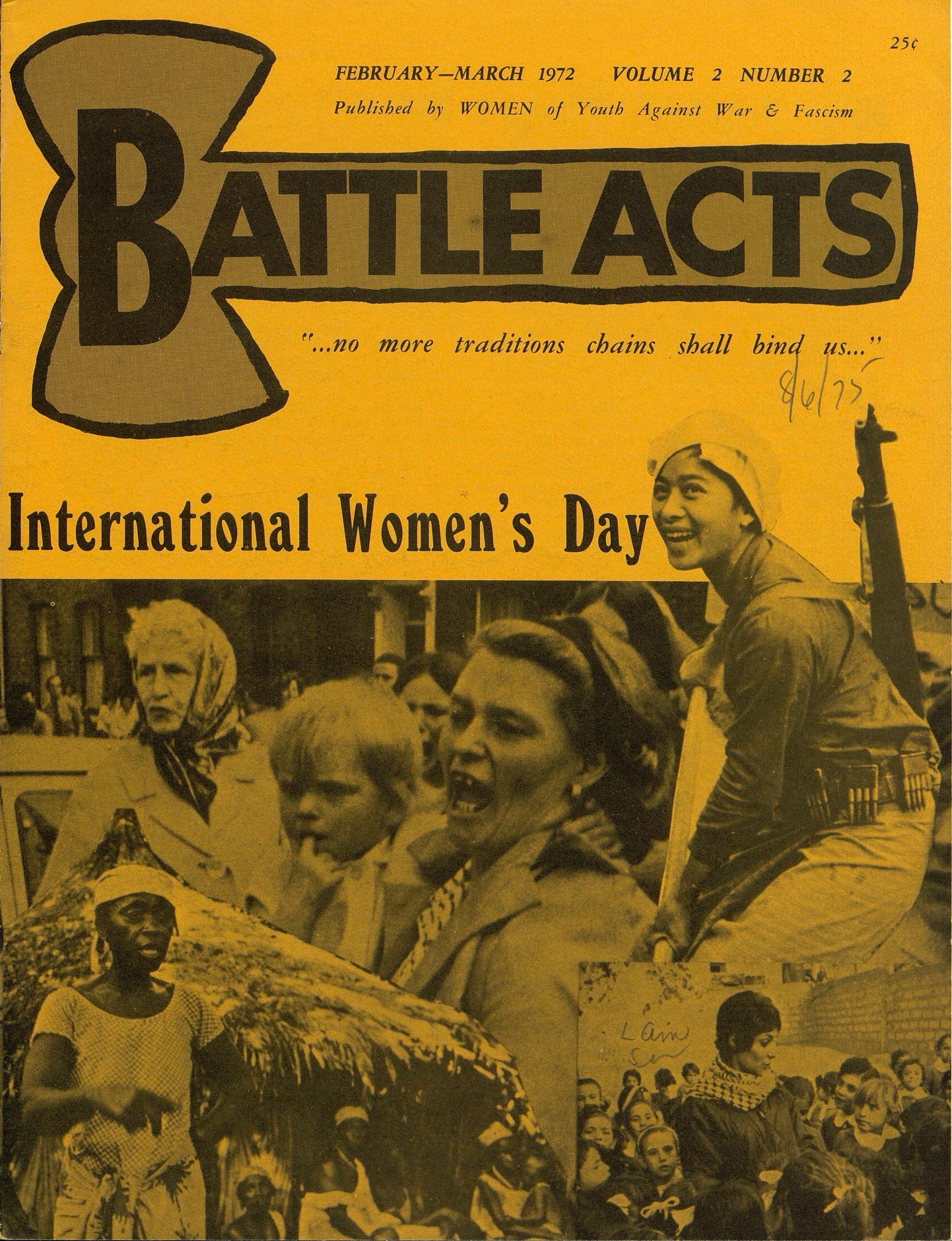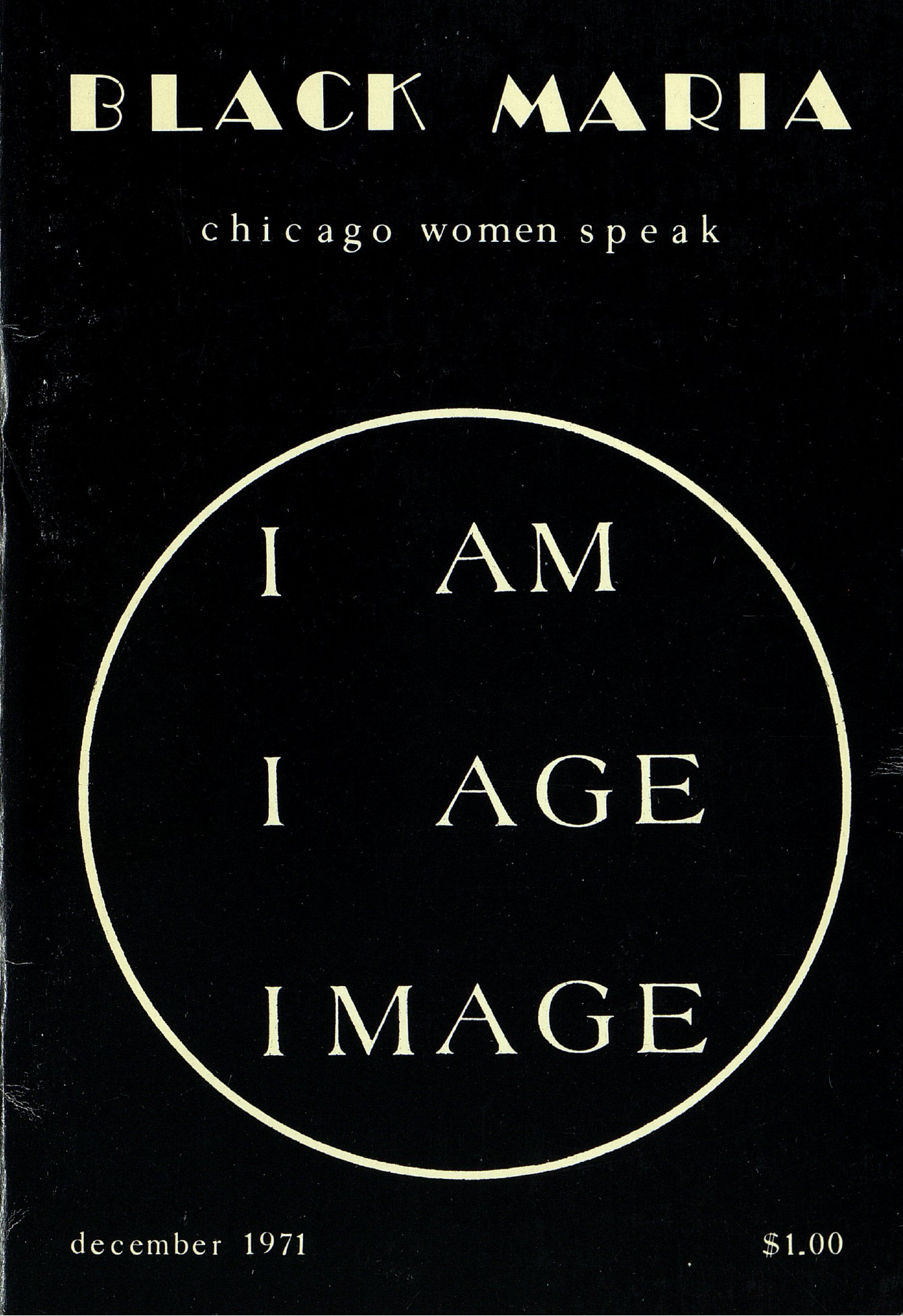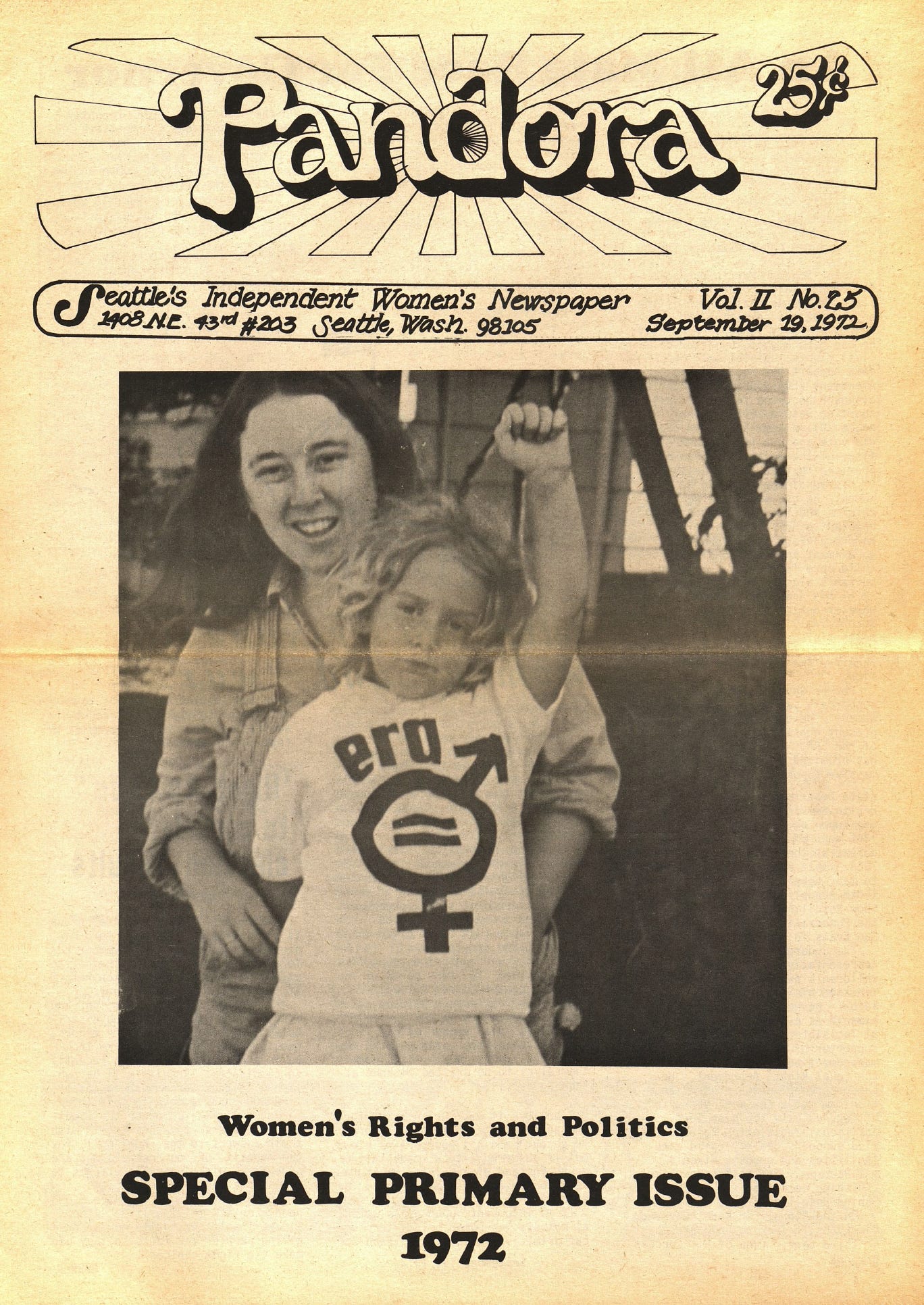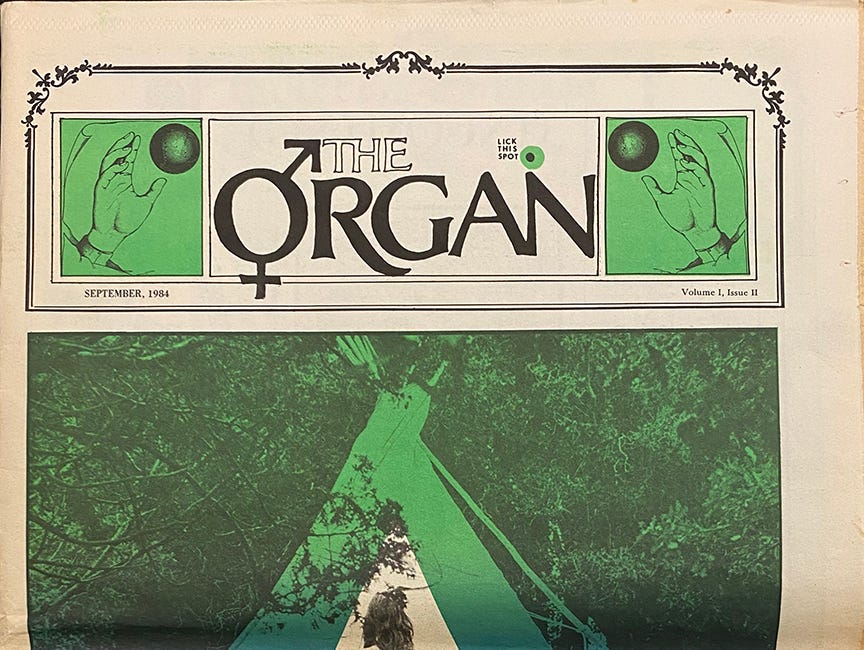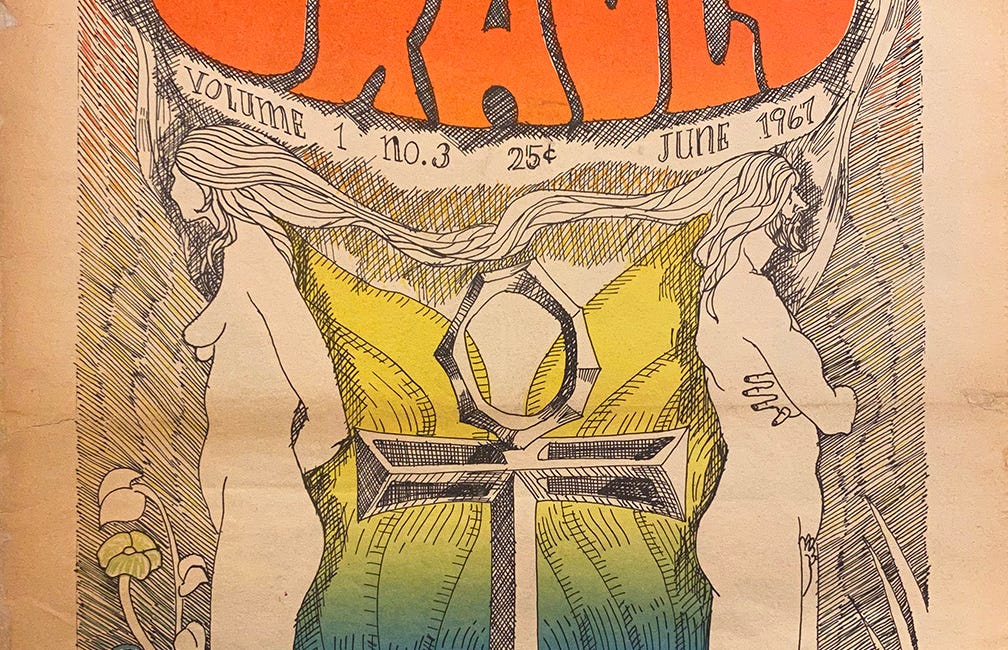Women's Liberation & Counterculture Publications
Design in the Feminist Underground Press, 1968-1972
With my brain rather muddled this week, I am processing and planning for the future by looking through feminist counterculture publications…
I’ve written on here before about some of my research looking through underground press publications, their design, and how fashion was written about in them (scroll to the bottom for links)—research that contributed to the history I wrote of the counterculture fashion magazine Rags for its fiftieth-anniversary box set and book and a chapter on Rags in the just released academic volume, Fashion in American Life.
Below are covers of a variety of feminist publications, all published between 1968 and 1972. Unlike Ms., whose premiere issue in July 1972 sold 425,000 copies, these publications had very small circulations and primarily more localized distribution; Washington D.C. based Off Our Backs had a circulation of 10,000 around 1972, while the Venice, CA, Everywoman only sold 3,000 an issue.
“United principally by the desire to gain women full equality, the women's liberation movement is made up of many factions that sometimes seem to agree only that women get a bad deal. With so many viewpoints, it is not surprising that the movement has given birth to many newspapers, magazines, and newsletters. By 1972, according to PM, a movement newsletter, there were over 150 such publications.
Many have lively and challenging names: Ms., Ain't I a Woman!, It Ain't Me Babe, Free and Proud, Off Our Backs, Pissed Off Pink, Underground Woman, and Velvet Fist. The publications cover a wide range of sisterhood concerns: equal pay for equal work, day care centers for working women, an end to sexism in the media. Some, like Off Our Backs, are highly political and seek radical change. Others, like Women: A Journal of Liberation, resemble scholarly journals, with measured language and intellectual rationale for political and social positions.” - Everette E. Dennis & William L. Rivers, Other Voices: The New Journalism in America (1974)
Limited funds and small circulations did not hinder them from creating radical magazines/newspapers with powerful covers and design, though the design styles were as varied as their viewpoints—from graphic and stylized, to messy, hand-drawn and immediate. I’ve included the names of designers, artists, and photographers, where credited.

Counterculture Periodicals I: The Organ
Every few weeks for the past few months, I’ve made an appointment in a special collection at the New York Public Library to view 1960s-70s counterculture publications as part of my research for a chapter in an academic book that I’m writing (more on this later). While I had looked through some of these periodicals while doing my PhD work, this has been the first time that I’ve sat and analyzed them page by page—becoming well acquainted with the particular voices and personalities of different newspapers and aware of the internal dynamics leading to changes in style and focus.
Counterculture Periodicals II: The Oracle of Southern California
Following on from my previous counterculture periodicals newsletter, I thought I would share with you some thoughts and images from The Oracle of Southern California/Southern California Oracle (OSC). As I mentioned previously, I've been viewing 1960s-70s counterculture publications in the NYPL's special collections as part of my research for a chapter i…
Counterculture Periodicals III: The East Village Other
As I’ve spoken about here and here, I've been researching 1960s-70s counterculture publications for a chapter in an upcoming academic book. The two publications I’ve shared so far in this newsletter—The Organ and The Oracle of Southern California—were both West Coast-based. Today I thought I would look at
The Counterculture, Design & More: A Conversation with Steven Heller
This morning I released a new episode of the Sighs and Whispers podcast—a conversation with art director and author Steven Heller. Below is an introduction to Steven—you can listen to our discussion on Soundcloud, Apple Podcasts, Stitcher and Spotify
Outside Fashion
When we think of the late sixties counterculture, all of us conjure up in our minds images of their fashion looks. Dress was such an essential part of countercultural identity, regardless if one was a hippie, a Hells Angel, a Black Panther, or a feminist. The mass media, then and now, reinforced how each of these groups was supposed to dress. The ideolo…








